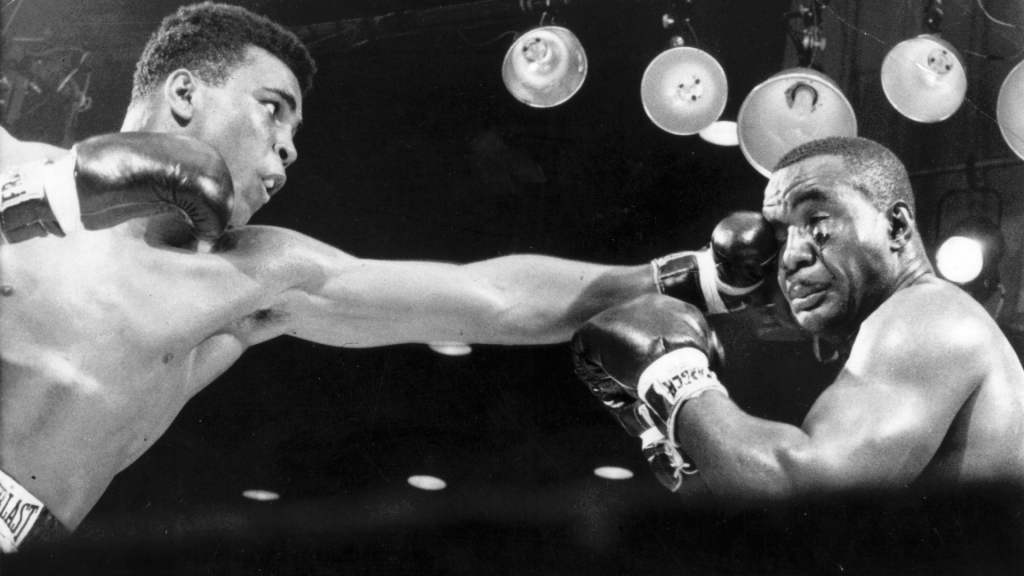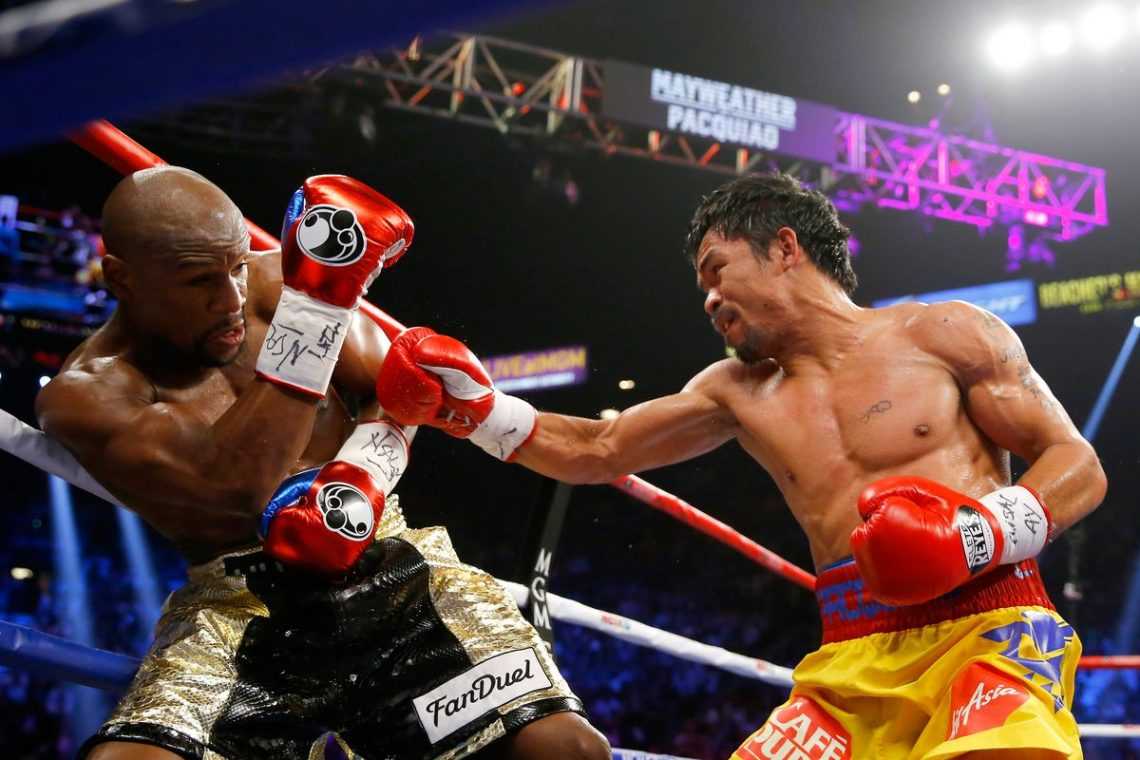Punching is one of the earliest forms of combat known to man. It’s one of the first moves of an ape, and a child learns to defend themselves, just without the usual grace of a boxing punch. As humanity evolved, so did the art of violence that they used. From improving their tools in war, improving their skills in combat, and over time developing martial arts such as boxing.
Boxing itself has gone through an evolution over the years. It started out as a more brutal sport with where men fought for hours, and the end of a round was signified by a knockdown. Between rounds, they took shots of whiskey and went back out there to hammer their opponents. Then men like John Sullivan, Jack Dempsey, and Jack Johnson introduced new aspects to the game. Men like Ray Robinson and Muhammad Ali elevated it to new heights and modern era boxers like Mike Tyson and Roy Jones have shown us things we have never seen before and will probably never see again.
Throughout all these decades of legends, we’ve picked up and learned many things, one of which, is there are more than just 6 basic punches to boxing. Let’s explore the 6 basic punches and the many variations amongst them.
The 6 Basic Boxing Punches and Their Variations
Now the 6 basic punches are what you learn when you first start boxing. You always start with the jab and work your way into learning your power punches. You may stick to this for a few months until you notice more seasoned fighters stepping out of the lines of what you’ve been thought. You may even decide to start experimenting on your own, and good on you trailblazer!
So for now, let’s cover what people normally start with.
1. The Jab

This is going to be your lead hand punch. If you’re an orthodox fighter (right-handed) then this will be your lead left straight punch. The jab is one of the most important punches in boxing. This is because it is the easiest punch to land and one of the punches that are the least telegraphed. Not only does it travel the shortest distance, but it also has the ability to get the most speed and snap on it, when done right. This allows you to land on your opponent, make them lose sight and focus, in order for you to land a power punch next and put their lights out.
To throw a good jab you want to make sure you do a few things right:
- Don’t lean your torso forward when you throw, this will bring your head closer to your opponent’s fist and nullify any distance advantage the jab gives you.
- Always roll your shoulder all the way out in order to get more reach and torque on your jab.
- Keep your arm completely relaxed when throwing the punch. A good way to practice this is to let your palms loose when punching.
- Always throw the jab as fast and hard as you can
- Bring back your jab to your chin with the same intensity as you threw it out, but only once it completes its entire range of motion.
The jab is a punch you want to master so try to isolate it in training to improve it.
2. The Right Hand (Cross)

Now I’m discussing these for an orthodox fighter, if you’re a southpaw(left-handed fighter) then simply reverse the hand, for you this would be your left hand because your right will be your lead.
The right hand is a punch that brings with it the entire force of your body with the speed and tenacity of a good jab. It’s a very special punch and in combination with your jab, is often all you need to be steps ahead of the average fighter. A good “1,2” will take you a long way.
The best way to throw the right hand is to make sure you:
- Pivot your foot
- Flick your hip completely out
- Rotate your lats and your shoulder over with the momentum of the hip
- Extend the shot all the way
- Make sure your shoulder is covering your chin on the way out and in
When it comes to aiming it, you want to make sure you shoot the punch directly at the chin or the nose.
Much like any punch, perfect it by isolating, and keep in mind you want to put your body into one fluid motion.
3. The Left Hook (Lead Hook)

In my opinion, the left hook is one of the most versatile punches out there and has the most potential to knock someone out from just about any punching distance, and especially on the inside. The trick is to generate enough force with the left hook from anywhere you throw it.
The key to throwing the left hook with force is to throw it like a literal hook. Rather than cocking back to or slipping to your left to get distance, you want to simply draw a hook with your left hand and then swivel your way with your pivot and hip into your target. Practice this repetitively in order to land the punch harder from a short distance. Try and generate as much power as you can each time.
4. Right Hook (Rear Hook)
The right hook is a punch that can be thrown in so many diverse ways and is a good punch to mix up with any combination that you want. One of the masters of a good right hook are guys like Mike Tyson, Mayweather, and Adrien Broner, who throws it beautifully after a straight jab shot or as an over the top counter. The right hook is a punch that carries with it A LOT of power but is harder to land than most other punches, especially if you’re on the outside.
However, if you take the Mike Tyson approach, you will be able to throw it after a slip and generate a ton of power on the way up from the slip, putting the momentum from your legs up into your body, rolling it into the punch.
5. Left Uppercut (Lead)

Uppercuts in general are amazing inside punches but the left uppercut has the potential to break the fundamental rules and become a mid-range lead punch. It’s a good first punch to shoot in order to confuse your opponent and follow it up with another shot like the right hook. The uppercut is something you want to throw when you know you can land it. Much like any power punch, the torque will come from your hips, legs, back, and shoulders.
6. Right Uppercut (Rear)
The right uppercut is the punch that can spell lights out for your opponent as it can generate a ton of force going up into your opponent’s brain from the angle they least expect. It’s great being thrown on the inside, or as a slip counter to a jab.
Each Punch Can be Thrown to the Body

One thing I didn’t mention is that each punch can be thrown to the body but we’re not going to give them it’s own number count in this case, save that for when your coaches call out your combos. However, one thing that is different when you throw these basic punches to the body, is that you want to keep your head off the centerline when you do it. Throwing a body punch from far to mid-range is a high-risk activity of getting countered, getting or hurt, or getting knocked off balance.
Always throw body punches with your head off the centerline.
Variations of Each Basic Punch
Now that we know the basics, let’s get into some versions of each punch that most coaches frown upon but are very effective ways of throwing your opponent off.
When I say variations, I don’t just mean the different ways you can throw a jab, I mean an actual different punch, that’s most closely related to a jab. So like the Ali jab is still a jab, he just throws it differently. In this case, we’re going to be talking about all these variations that are actually different types of punches.
The Upjab

This is what I call Bruce Lee jab. Rather than rotate your shoulder and your fist over when you throw, you will instead move your arm straight out, headed in the natural upwards direction that it takes when you don’t rotate that punch. This is a punch Floyd and Roy have utilized and it’s more a Kung-fu punch but it works great in boxing as it creates an angle for the punch that can split right through the guard and help you set up other shots. Manny also mastered these shots with both hands.
Overhand Right

The overhand right is not a straight right-hand associate. It is in fact a completely different punch. One of the most famous overhand rights ever landed, and one of the most beautiful was Khabib landing his knockdown shot on Conor McGregor. If you want to see what a good overhand looks like, that’s it. It takes a ton of practice but it’s a punch that is a perfect counter over the jab and is great to shoot on guys who carry their left low.
Underhand Right

Most guys don’t know about this punch and never throw it because it doesn’t exist as an option in their minds. However, it is a very effective punch and Roy Jones proved that in his fight against Virgil Hill. He said he couldn’t catch Virgil over the jab, so he went under, and broke his rib. This is a punch that works well as an intercepting shot. What you want to do when you throw it is the same thing Jones did, lean into it, and move your head out of the way of the firing range. After landing this under the jab a few times, your opponent will be wary of it, that’s when you can head back upstairs.
The Straight Hook

When thinking of this punch, think of Roy Jones Jr. looping shots. That he throws while his elbow is looked out. He did this the most in his fights against Richard Hall. It almost looks like when guys windmill, but with a professional sparkle to it. This punch can be very effective as it is tricky to see coming and can carry a ton of mentum on it. However, it is something you have to practice. It’s very unorthodox and can take time to get right and be able to throw it without getting off balance. It’s also a shot you want to throw when you know you can land it.
The Overhand Hook

Here you want to think GGG throwing his hook over his opponent’s guard where he brings it from an upward angle heading down. This is a great punch to get around the guard or counter straight shots. He is not the only one to pull it off. Adrien Broner throws a great overhand right hook over his opponent’s jabs,
The Huppercut

This is a hook and uppercut mix and as an example, we’re going to go to the king of unorthodox punches: Roy Jones Jr. The best example of this punch is when he threw this very punch to knockout Montell Griffin in the first round of their second fight.
Drills Pay the Bills
The only way to master boxing punches is to constantly drill them. Take entire rounds to just work on one punch and perfect it. You want to make sure you never get into the habit of throwing mediocre punches. Always throw punches to the best of your ability and make sure you’re always pushing to try and throw your punches faster, harder, cleaner, and with more efficiency. Boxing is a sport that rewards those that work hard, but also those that work smart. You never want to just hit the bag or shadow box for conditioning, you want to partake in deliberate practice of things.
Remember, it all works if you work.


